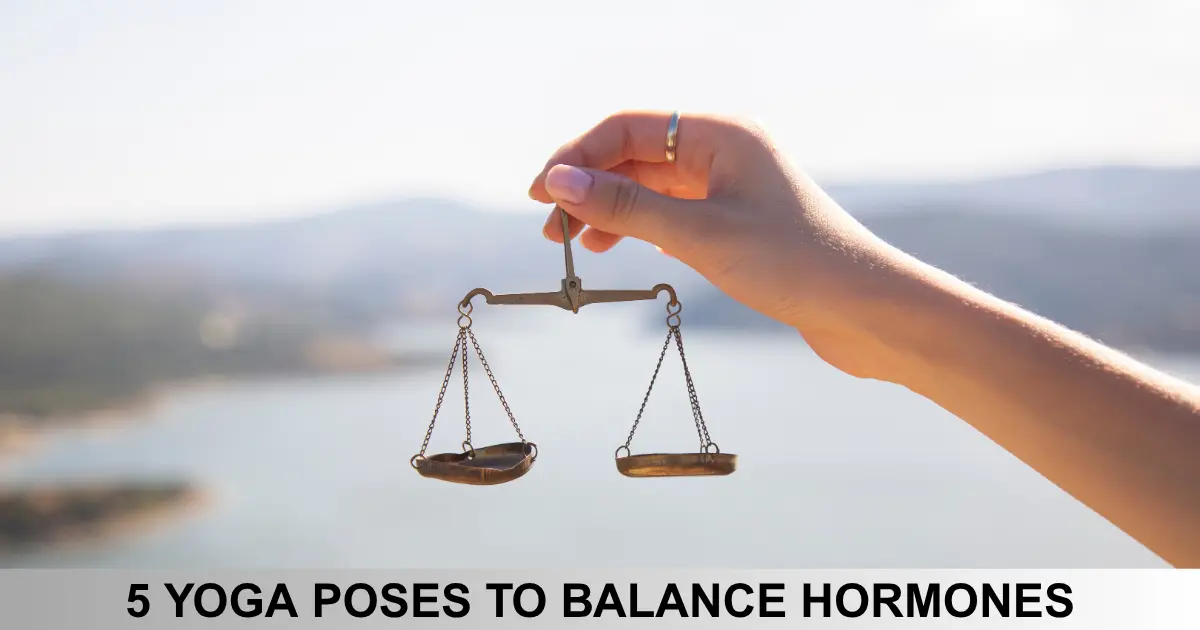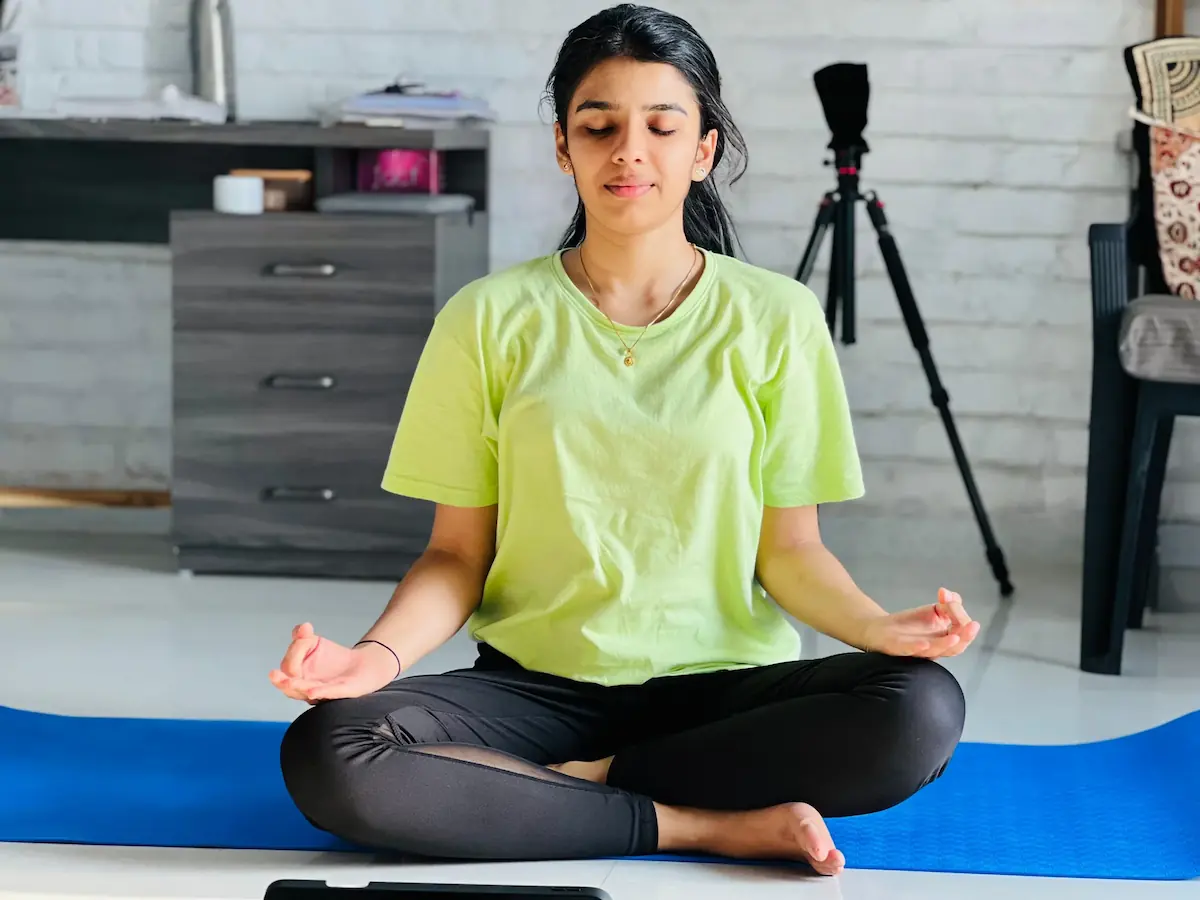Starting a yoga practice at home is one of the most empowering steps you can take for your health. It’s flexible, cost-effective, and lets you move at your own pace no crowded studios or rigid schedules. Practicing yoga at home helps you tune into your body, manage stress, and build a daily wellness habit that fits your lifestyle. If you’re looking to support your hormonal health, these five beginner-friendly yoga poses are a great place to start.
Ustrasana (Camel Pose)
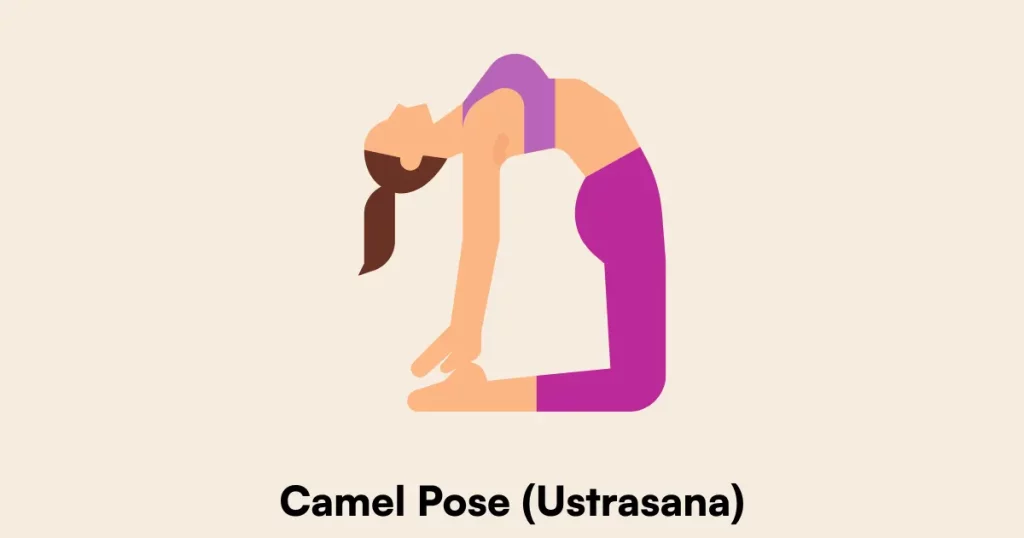
How to Do It
- Kneel on your mat with your knees hip-width apart.
- Place your hands on your lower back for support.
- Slowly arch your back, reaching your hands to your heels.
- Tilt your head gently backward, opening your chest.
- Hold for 30 seconds to 1 minute, breathing deeply.
- Return slowly to the starting position.
Benefits
- Stimulates the thyroid and parathyroid glands, supporting metabolism and hormonal balance.
- Relieves tension in the neck and back, easing stress.
Tips & Precautions
- Move gently and avoid forcing the backbend.
- If you have neck or back issues, keep your hands on your hips and don’t drop your head back.
Sarvangasana (Shoulder Stand)

How to Do It
- Lie on your back with your arms by your sides.
- Lift your legs and hips up, supporting your lower back with your hands.
- Straighten your legs and align your body from shoulders to toes.
- Hold for 30 seconds to 1 minute, breathing calmly.
- Slowly lower your body back down.
Benefits
- Stimulates the thyroid and pituitary glands, helping regulate hormone production.
- Improves blood flow to the brain and endocrine system, reducing stress.
Tips & Precautions
- Avoid if you have neck, shoulder, or high blood pressure issues.
- Use a folded blanket under your shoulders for extra support.
Setu Bandhasana (Bridge Pose)
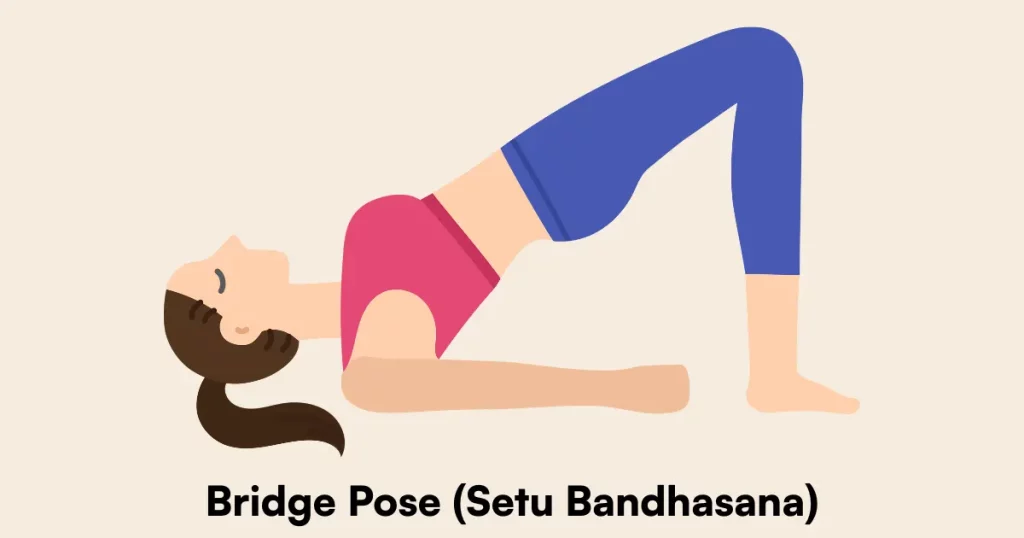
How to Do It
- Lie on your back with knees bent and feet hip-width apart, flat on the floor.
- Press your feet firmly into the mat and lift your hips toward the ceiling.
- Clasp your hands under your back and press your arms and shoulders into the ground.
- Hold for 30 seconds, breathing evenly.
- Slowly lower your hips back down.
Benefits
- Stimulates the thyroid gland and improves blood flow to the endocrine system.
- Relaxes the nervous system and reduces stress hormones like cortisol.
Tips & Precautions
- Place a yoga block under your lower back for extra support if needed.
- Avoid if you have recent back or neck injuries.
Bhujangasana (Cobra Pose)
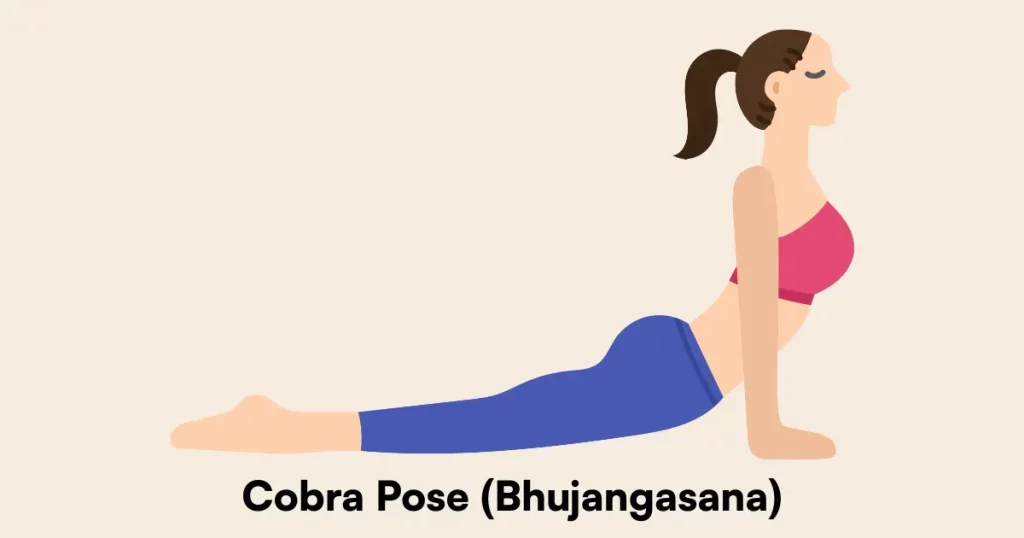
How to Do It
- Lie face down with your hands under your shoulders.
- Press into your palms and lift your chest off the floor, keeping elbows close to your body.
- Open your chest and look slightly upward.
- Hold for 20–30 seconds, breathing smoothly.
- Lower down gently.
Benefits
- Stimulates the adrenal glands, helping your body manage stress.
- Strengthens the spine and improves blood circulation.
Tips & Precautions
- Keep your shoulders relaxed and away from your ears.
- If you have back pain, lift only as high as comfortable.
Baddha Konasana (Butterfly/Cobbler Pose)
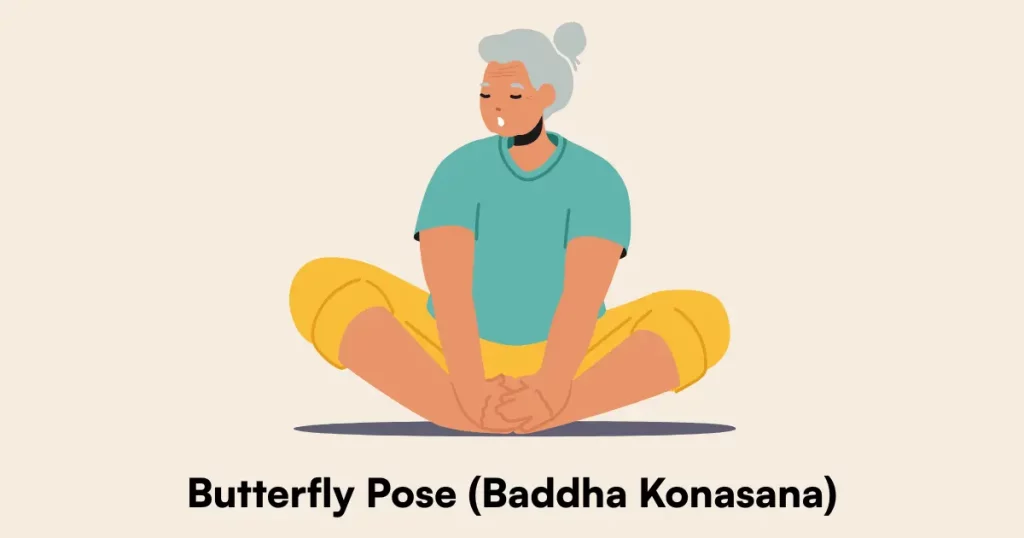
How to Do It
- Sit on the floor with knees bent and soles of your feet touching.
- Hold your feet with your hands and gently press your knees toward the floor.
- Keep your spine straight and lean forward slightly if comfortable.
- Hold for 1–2 minutes, breathing deeply.
Benefits
- Improves blood flow to the pelvic region, stimulating reproductive organs and balancing sex hormones.
- Relaxes the hips and helps reduce stress.
Tips & Precautions
- Sit on a folded blanket if your hips feel tight.
- Move gently and avoid forcing your knees down.
- Beginner Yoga Poses for Stress Relief
- Why Your Mind Wanders During Meditation
- Yoga vs Gym: Which is Better for Mental Health?
Conclusion
Yoga is a gentle, natural way to support your hormonal health right from the comfort of your home. With just a few minutes each day, these beginner-friendly poses can help you feel more balanced, energized, and at ease. Remember to listen to your body, breathe deeply, and enjoy the journey. Consistency is key, so try to make yoga a part of your daily routine for the best results.
Frequently Asked Questions (FAQs)
1. Can beginners do these yoga poses at home?
Yes! All the poses listed are suitable for beginners. Start slowly, follow the steps, and use props like blankets or blocks for support if needed.
2. How often should I practice these poses for hormonal balance?
Aim for at least 3–5 times per week, or daily if possible. Even a short session can make a difference over time.
3. Do I need any special equipment?
A yoga mat is helpful for comfort, but you can use a towel or blanket. Props like blocks or straps can make some poses easier.
4. Are there any risks or who should avoid these poses?
If you have medical conditions (like neck, back, or blood pressure issues), consult your doctor before starting. Always listen to your body and skip any pose that feels uncomfortable.
5. How does yoga help with hormonal balance?
Yoga stimulates glands in the endocrine system, reduces stress, and promotes relaxation—all of which support healthy hormone levels.
Ready to get started? Roll out your mat, take a deep breath, and enjoy the benefits of yoga for your mind and body!
